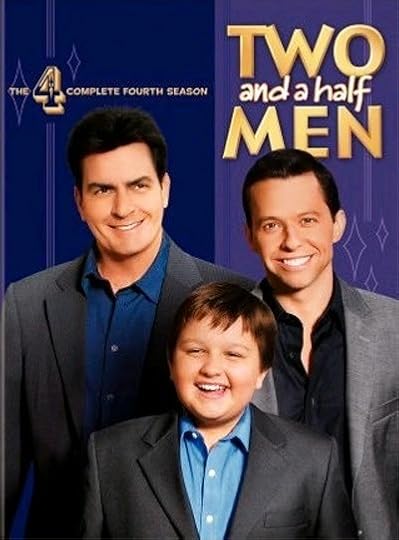Replaceable You: Saying Goodbye to One and a Half Men

The hit CBS sitcom Two and a Half Men has been with us (God help us!) for more than a decade. Originally it was a raunchy odd-couple story about an uptight chiropractor (Jon Cryer) who got divorced and moved into the swinging Malibu beach pad of his jingle-writing brother (Charlie Sheen). The twist was that Cryer brought a young son (Angus T. Jones) to the relationship. Hence the series’ title. As the whole world knows by now, Sheen flipped out in early 2011, making nasty statements about series creator Chuck Lorre, and earning himself a million headlines, a trip to rehab, and a pink slip.
But a hit is a hit, and so Lorre and company opened season nine by orchestrating a colorful off-camera death for Sheen’s character and providing Cryer with a new roommate, played by Ashton Kutcher. The show’s popularity continued. Still, all was not well in CBS-land. Young Angus T. Jones had debuted on the show at age 10. By age 17, he’d become the highest paid child star in television, earning $7.8 million over the course of two seasons. Then in 2012 came his loud (OK, strident) pronouncement that he’d found God. The new God-fearing Jones decried Two and a Half Men as “filth,” labeled himself a “paid hypocrite” for his role in it, and warned audiences not to watch. It’s obvious what had to happen next. Jones’ character joined the U.S. Army and vanished into the distance.
Wait! – wasn’t that pretty much what happened to Richie Cunningham when Ron Howard decided to leave Happy Days? Except, of course, that Richie was sent to Greenland, not Japan, and returned for the occasional Very Special Episode.
In any case, Two and a Half Men now has a new member of the younger generation. She’s Amber Tamblyn, playing a previous unacknowledged daughter of the Charlie Sheen character. And she’s a lesbian. Does that make her a half man, perhaps?
Creators of hit series are well aware that the actors playing popular characters may not want to stick around forever. But it takes some ingenuity to figure out what to do. The family sitcom My Three Sons faced a stumbling block when eldest son Tim Considine left the series. Solution: #2 son Don Grady was moved up to #1, and dad Fred MacMurray adopted a younger boy to give him the requisite number of offspring.
Then there was M*A*S*H, both an hilarious comedy and a serious meditation on the perils of warfare. The show, set in a medical unit during the Korean War, was on the air so long (1973-1983) that personnel changes were inevitable. Still, those in charge worked hard to maintain the interpersonal dynamics that made the series a hit. In the early days, the tent-mate and nemesis of Hawkeye Pierce (Alan Alda) was Larry Linville’s incompetent Captain Frank Burns. When Linville moved on, he was replaced by David Ogden Stiers’ Major Charles Winchester, which made Hawkeye’s chief antagonist no longer a nincompoop but rather a highly intelligent snob. Another important cast change came when McLean Stevenson chose to no longer play the local commander, goofy Lt. Colonel Henry Blake. His replacement, down-to-earth Henry Morgan, more than adequately filled the bill. But fans of the show will never forget Stevenson’s final episode. Through most of it was filled with pranks and warm goodbyes, the tag ending startled viewers (and cast members, I’m told) with the news that Henry Blake’s transport plane had been shot down over the Sea of Japan, and that there were no survivors. That’s one way to ensure there’ll be no return visits.
Published on March 21, 2014 11:43
No comments have been added yet.
Beverly in Movieland
I write twice weekly, covering topics relating to movies, moviemaking, and growing up Hollywood-adjacent. I believe that movies can change lives, and I'm always happy to hear from readers who'd like t
I write twice weekly, covering topics relating to movies, moviemaking, and growing up Hollywood-adjacent. I believe that movies can change lives, and I'm always happy to hear from readers who'd like to discuss that point.
...more
- Beverly Gray's profile
- 10 followers



